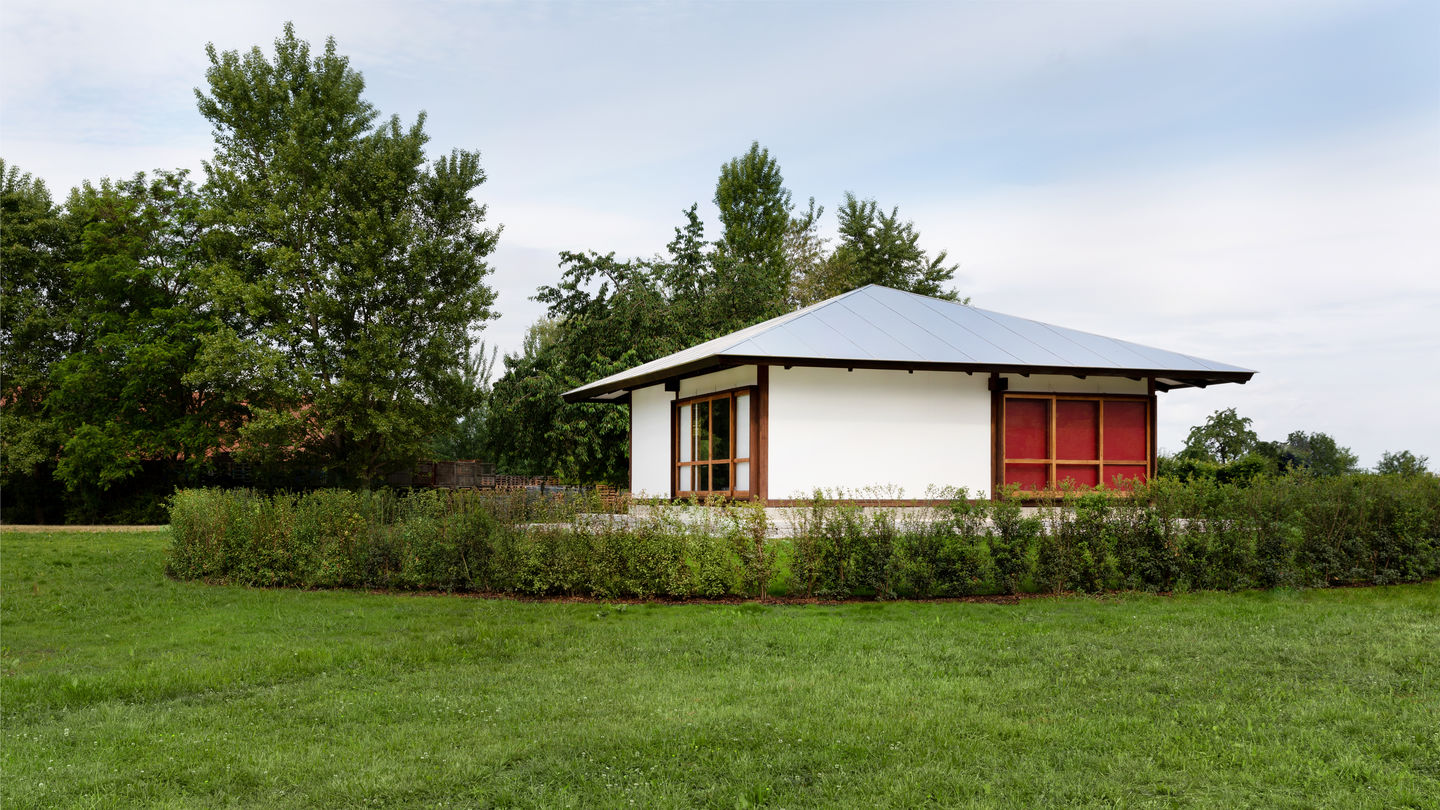Umbrella House
Kazuo Shinohara, 1961/ 2022

Kazuo Shinohara (1925–2006) is considered one of the most important Japanese architects from the latter half of the twentieth century, along with Kenzo Tange. His work subsequently influenced architects such as Toyo Ito and Kazuyo Sejima, but is still little known internationally. A masterpiece from Shinohara’s so-called First Style is the Umbrella House built in Tokyo in 1961, which has now been reconstructed on the Vitra Campus in Weil am Rhein.
The wooden house with its square layout offered sufficient space for a small family under its namesake roof – the ›umbrella‹. In designing the house, Shinohara drew on the traditional vernacular architecture of Japanese homes as well as temples, transferring various motifs to residential construction for the first time. For example, the pyramid-shaped roof form used in the Umbrella House had previously only been seen in temple complexes. When building the Umbrella House, Shinohara deliberately employed simple and inexpensive materials, such as the cement fibre boards on the façade. The Umbrella House made a novel and inspirational contribution to the architectural discourse of 1960s Japan.
The wooden house with its square layout offered sufficient space for a small family under its namesake roof – the ›umbrella‹. In designing the house, Shinohara drew on the traditional vernacular architecture of Japanese homes as well as temples, transferring various motifs to residential construction for the first time. For example, the pyramid-shaped roof form used in the Umbrella House had previously only been seen in temple complexes. When building the Umbrella House, Shinohara deliberately employed simple and inexpensive materials, such as the cement fibre boards on the façade. The Umbrella House made a novel and inspirational contribution to the architectural discourse of 1960s Japan.
As the Umbrella House was to be demolished to give way to a roadbuilding project at its previous location in Tokyo, Vitra decided to acquire the house and safeguard it for posterity. Built using a wooden post-and-beam construction method, the house was carefully dismantled in the summer of 2020 and separated into its individual parts. The wooden structure made of Japanese cypress, Japanese pine and Oregon pine was securely packed along with the other components and shipped to Weil am Rhein. Reconstruction on the Vitra Campus commenced in September 2021 in close coordination with the Tokyo Institute of Technology and was completed in summer 2022.
Publication date: 13.06.2022
Images: Dejan Jovanovic






